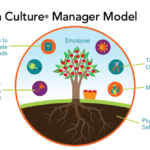7 Tips to Empower a Positive Learning Culture (2 in 3 part series)

Whether you know it or not, your organization already has a culture of learning. Because humans are biologically wired to learn. Entire segments of our brain are dedicated to observational learning and we also pay attention to how leaders behave and the rewards and consequences of those choices. But what kind of learning is going on? Are you empowering a positive culture of learning that enhances the success of your organization, your employees, and yourself? Or one that breeds conformity, stagnation, or, worse, disengagement and exclusion?
I could go on about the perils of the latter. Organizations with poor learning cultures lose top talent, struggle to keep customers, and ultimately fall behind their competitors. They may seem profitable on paper but eventually, the human costs catch up and they fail.
Organizations that don't just succeed but flourish and thrive empower positive learning cultures. Let me share a few ways you can do this:
1) Honor the Ever-Present Nature of Learning
Every day, learning is happening in your organization. People learn on their own, through experience and exploration. People help each other learn through many small moments: advising, guiding, and coaching. They also learn by watching others observe which behaviors are rewarded and which are ignored.
Learning isn't confined to a scheduled event, and it's not owned by one department. Across enterprise leaders at every level should drive the conversation, to proactively create a culture and environment that celebrates and supports learning.
2) Make it Safe to Learn, Make Mistakes, and Even Fail
The learning process involves curiosity, exploration, taking risks, and-most importantly-making mistakes. No one ever really develops mastery without those ever-important stumbles. So, create a culture where it's safe to take risks and make mistakes in every department, not just at learning events. It means celebrating people's aha! moments as much results and successes.
When mistakes inevitably happen, it's important to harvest the important lessons learned, rather than shaming and blaming. Trust me, I have seen organizations that claim to value learning but the real culture lives in the day-to-day interactions around what happens when people fail. Harvard's Dr. Amy Edmondson has done some brilliant research on psychological safety-learn more about it because it is the cornerstone of a great learning culture.
3) Value Learning as a Path to Mastery
Most professionals need a range of skills to be successful in their roles. And as those roles move higher in the organization, they usually require enhanced expertise and mastery. It's important that your organization offers learning paths that get people to the levels they need to be successful. I often see organizations where they have gaps in their learning paths, with too many resources dedicated to certain areas, and then shortages in others. I encourage you to map the skills and levels of mastery needed and then match your learning paths accordingly.
4) Train Your Managers to Coach Effectively
Great learning cultures are also coaching cultures. Coaching helps employees build their competence and confidence and is the best way to help people get better. Managers need to know how to apply the right blend of "skills coaching" and "clarity coaching." When I look at how most organizations offer manager training, they are often missing these critical elements.
The word "coach" gets used a lot but very few people actually know how to do it correctly. Coaching skills need to be a primary focus of manager training. And hearing about good coaching is not the same as actually coaching someone. This aspect of your training program should focus heavily on practice, allowing managers to build the right skills in the training room, through repetition. I always have managers learn both skills and clarity coaching and then blend them to create customized coaching, perfectly tailored to each of their direct reports.
5) Value Growth and Improvement in Your Performance Assessments
Most performance-rating systems are based on outcomes, not effort. We all know top performers whose jobs are a perfect match to their current skills but who never grow or improve. They may do good work but don't reach for their fullest potential.
If that's your organization's approach, you miss an opportunity to empower employees to grow. Several studies have shown that people step up and improve when working in a positive learning culture that recognizes and rewards allgrowth and improvement.
So, I recommend you assess your employees' growth as well as output, though effort they put into learning, measurable improvement in skills, and passion for the work. If this comprises a quarter to a third of your overall assessment, you'll be rewarding your top learners, not just your top performers.
6) Make Learning Easily Accessible
This is critical. On-demand learning empowers employees to seek and find their own answers. Neuroscientists have found that people retain this type of learning far longer than when just being told what to do. It also aligns with best practices in adult learning theory. That's why I launched my own online learning platform (www.BrittAndreattaTraining.com) and why I have so many courses on Lynda.com/LinkedIn Learning. What's easier than watching a short video that you can access 24/7 from any device?
To create valuable learning that's easily accessible to employees, you'll find that technology must be a vital part of your learning strategy.
7) Use Blended Learning to Maximize Options
Remember, not every type of learning works for every person or situation. For example, in-person learning can be tailored for your organization and provide opportunities for hands-on application and collaboration. Online instruction is perfect for self-paced learning or as pre-learning for an in-person event. Check out some of mine:
Listen, you are sitting on resource gold, just waiting to be mined. Your employees possess the potential to drive your organization to new heights of success. Cultivate a positive culture of learning to naturally reap the many benefits of learning provides and set up your organization to thrive for decades to come.
Related Blogs
JOIN OUR COMMUNITY
Be the first to know of Dr. Britt Andreatta's latest news and research.





